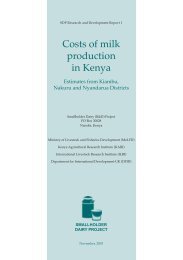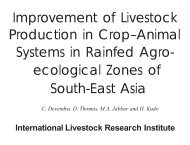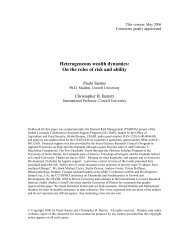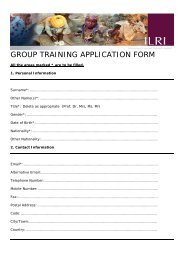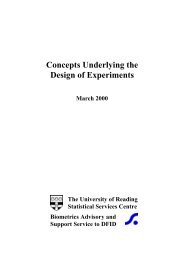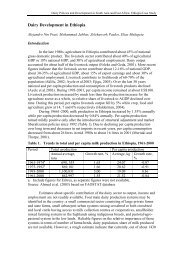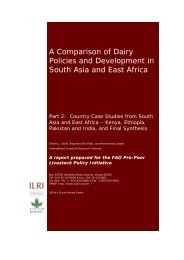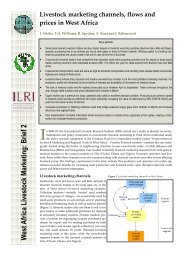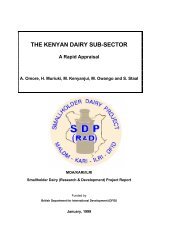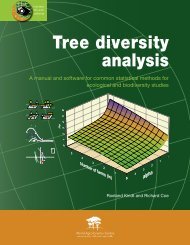Designing ecological and biodiversity sampling strategies
Designing ecological and biodiversity sampling strategies
Designing ecological and biodiversity sampling strategies
Create successful ePaper yourself
Turn your PDF publications into a flip-book with our unique Google optimized e-Paper software.
5. Focus on objectives: stratificationIn the introduction to this paper, I suggested that focussing on objectives of a studywill increase the efficiency of the design. Consider the example of the objective ofdiscovering <strong>and</strong> underst<strong>and</strong>ing l<strong>and</strong> use effects on BGBD. This requires comparisonof different l<strong>and</strong> uses. One approach to improving the <strong>sampling</strong> design (relative toSRS or a single grid) is to use ‘stratification’ to ensure that we do indeed haveadequate sample sizes of each l<strong>and</strong> use. Used in this sense, the strata are l<strong>and</strong> areasunder different uses, <strong>and</strong> the idea is to deliberately sample from each of these. It issometimes suggested that this approach is ‘biased’, as the l<strong>and</strong> use classes to sampleare determined a priori. If the data were used to make statements about the overallstudy area (e.g. the mean number of beetles per m 2 ) without accounting for the design,then the result may be biased, as different l<strong>and</strong> uses may not be represented in thesample with frequencies that are proportional to their occurrence in the study area.But the design is not biased for the objective of comparing l<strong>and</strong> uses. Furthermore, itis efficient. If we have a total of N samples to compare two l<strong>and</strong> uses, then, in theabsence of further information, the best design is to have N/2 in each of the twogroups. With the stratified <strong>sampling</strong> approach we can choose a suitable sample sizefor each l<strong>and</strong> use.If this approach is to be employed, then there are two prerequisites:1. We need to know which l<strong>and</strong> uses will be compared <strong>and</strong> have precise definitions ofthem.2. The location of these l<strong>and</strong> uses must be known — a l<strong>and</strong> use map of the study area isneeded.The first of these makes some scientists uncomfortable, with the feeling that priordefinition of the l<strong>and</strong> uses to investigate excludes discovery of potentially importantpatterns. But the definition has to be done at some stage anyway. The need to definethem precisely also has to be done at some time. For example, where is the boundarybetween ‘pasture with trees’ <strong>and</strong> ‘secondary forest’ along a gradient of increasing treecover? Here, we have another potential gain in efficiency from thinking through theserequirements at design rather than only analysis stage. If a <strong>sampling</strong> design does nottake l<strong>and</strong>use into account, then there is a good chance that many of the selectedsample locations will end up in positions of ambiguous l<strong>and</strong> use definition that we are13



